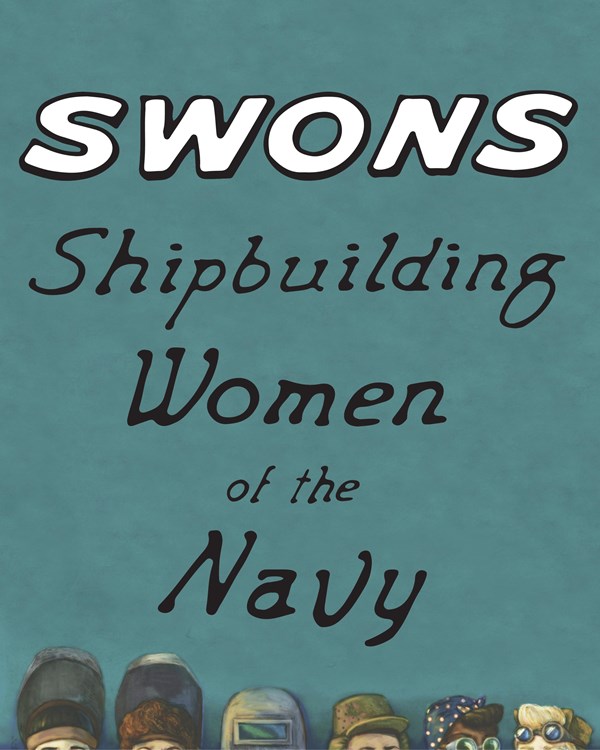Last updated: October 21, 2024
Person
Virginia L. Wilder Parker

Virginia Wilder Parker worked as a welder at the Charlestown Navy Yard (also known as the Boston Navy Yard) during World War II (WWII). Parker excelled in her craft, becoming one of only seven women employed by the Navy in Boston to be promoted to welder, second class.
A lifelong resident of the Boston area, Virginia Wilder Parker (nee Wadman) was 26 when the United States entered World War II in 1941.1 As the country mobilized for the war effort, men began to serve in the military overseas, so many women responded to the call to serve by working in wartime manufacturing industries.
After the war began, Virginia Wilder saw a newspaper picture of a welder, advertising positions at the Raytheon plant in Waltham, Massachusetts. Inspired, she applied for the job and became a spot welder at Raytheon. While she had purchased dungarees (denim overalls), Wilder described spot welding as something she "could have done in an evening gown."2 At Raytheon, she worked on an assembly line of fifty women where she spot-welded small items like light bulbs. Before long, her superiors noticed her skill and promoted Wilder to assistant supervisor.
Despite this promotion, Wilder longed for a position in which she could get her hands dirty. With this in mind, she applied to a welding position at the Boston Navy Yard and was hired shortly after. Before beginning her job in Charlestown, she went to welding school in South Boston. Once she had completed her training, Wilder worked on welding all aspects of ships, mostly LSTs (Landing Ship, Tanks), at the shipyard. LSTs transported troops and tanks, and they were designed to land assaults directly on enemy beaches. Wilder recalled that "when I first came to the yard they said women would never work below decks... We did down in the bilges, topside, everywheres [sic]. We welded in gun turrets." Working throughout the Navy Yard and in building 195, the structural shop, she worked alongside both men and women welders.
During her two and a half years at the Navy Yard, Wilder became the first woman welder to be promoted to second class. Only six other women in the area had made second class at the time, four of whom worked in Charlestown and three in South Boston. As one of a few women with this rank, Wilder faced criticism from people who believed that women should not receive such promotions.
Following her promotion, the US Navy assigned Wilder to the plate field. The plate field was located outside of building 104, near Pier 8.3 Working outside in the winter, Wilder and others faced bitter cold. At the plate field, workers welded large pieces of steel used to assemble rooms that would become part of Landing Ship, Tanks, which other workers built at the Charlestown Navy Yard. Here, supervisors x-rayed Wilder's welding work, requiring her to complete precise and error-free work.
Wilder faced not only hazardous weather, but also occupational dangers, including getting a piece of steel stuck in her eye. However, she felt an immense sense of pride in her work as ships set sail from the yard, bound for the Atlantic and the Pacific. Along with the pride she took in her welding work, Wilder also participated in community events at the yard. She was a member of the "gallon club," participated in monthly blood drives, and the Shipyard News documented that she attended a structural shop easter party.
Following the war, Wilder was let go from her job at the Navy Yard, but she wanted to continue welding. Her uncle gave her a job working on a welding project for Converse Rubber. As one of only a few women welders, people came to watch Wilder at work. Wilder recalled that after the war, she "would have stayed on because I like welding. I like to be paid. And welding fascinated me. To me it was like doing a painting."
Virginia Wilder Parker continued to live in the Boston area, working as a drapery worker. She married John Parker Jr. in 1956.4 While she did not continue welding, she remained patriotic and took pride in the work she completed for the war effort, a sentiment she expressed in her oral history interview with Boston National Historical Park in 2000.
Footnotes
- 1920 United States Federal Census, Medford Ward 4, Middlesex, Massachusetts; Roll: T625_714; Page: 2B; Enumeration District: 318
- Virginia Wilder Parker, Oral History interview with the National Park Service. Following quotes are all from this oral history interview.
- Stephen P. Carlson, Charlestown Navy Yard Historic Resource Study, Vol 2 (Boston, MA: Division of Cultural Resources, Boston National Historical Park, National Park Service, U.S. Department of the Interior, 2010).
- 1950 United States Federal Census; Massachusetts, U.S., Town and Vital Records, 1620-1988.
Success
Thank you. Your feedback has been received.
Error
alert message







